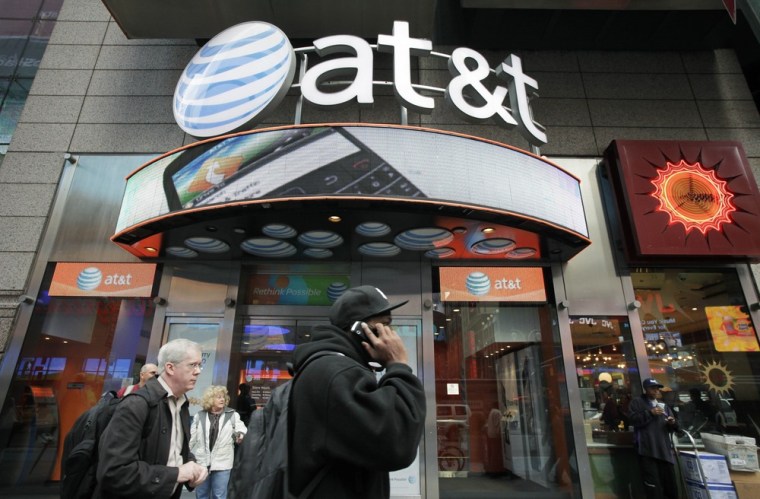The federal government has access to a massive database of 25 years of AT&T phone data, NBC News has confirmed, as part of a secret program in which phone company employees work alongside local and federal law enforcement agents to track the phone calls of suspected drug dealers.
As first reported by the New York Times, the Hemisphere Project is at least six years old and has access to the data from every call coming through an AT&T switchboard back to 1987. The pool grows by billions of calls a day, includes information on the location of callers, and is larger than the controversial database maintained by the NSA, which goes back five years.
As part of the Hemisphere program, the government is currently paying AT&T to embed a handful of phone company employees with drug task forces of local police and DEA agents in Atlanta, Houston and Los Angeles.
However, officials noted that the database is maintained by AT&T, and all government access to the records is controlled by valid subpoenas. They emphasized that the program does not involve listening to phone calls, but instead allows them to quickly “connect the dots.”
Drug traffickers use numerous methods to avoid electronic surveillance, including so-called “burner phones,” which are prepaid phones that can be bought for cash and used temporarily before being thrown away.
Officials told NBC News that the database lets them establish call patterns by finding links between these anonymous and short-lived numbers and networks of other phone numbers. Having the AT&T employees on-hand to receive the subpoenas, they said, makes for quicker turnaround. Most of the subpoenas are “administrative subpoenas,” meaning they are issued by a federal agency, generally the DEA, rather than a grand jury or a judge.
AT&T spokesman Mark Siegel said the company could not comment "on any particular matter," but said, "We, like all other companies, must respond to valid subpoenas issued by law enforcement."
The New York Times obtained a PowerPoint presentation describing the program from Drew Hendricks, an activist in Washington state. He said he had received the slideshow, which was not classified, via public information requests to West Coast police departments.
The PowerPoint slides have the logo of the White House Office of National Drug Control Policy and are marked “Law enforcement sensitive.” According to the Times, one slide says, “All requestors are instructed to never refer to Hemisphere in any official document.”
The slides also list several instances in which the program allegedly helped find suspects or drug shipments, and underline the utility of the program in tracking “burner” phones.
Representatives of other phone companies declined to comment when asked by the Times whether their companies participated in Hemisphere or any similar program.
Ryan Ruggiero contributed reporting to this story.
More from NBC News Investigations:
